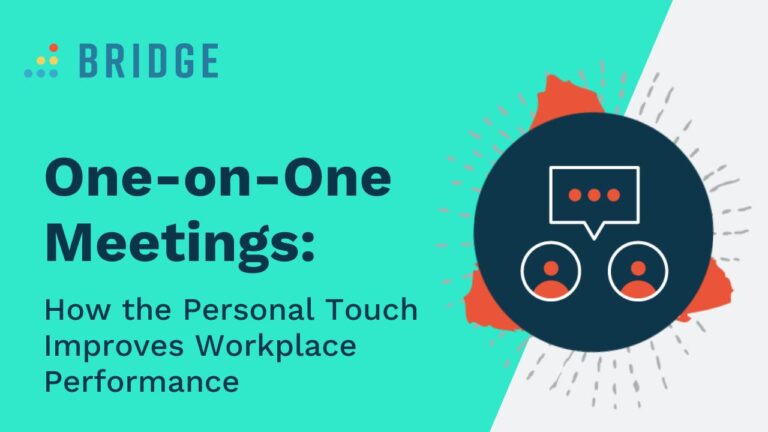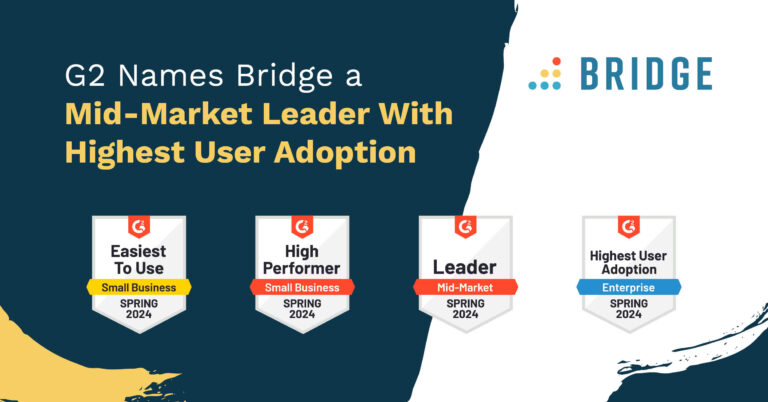Managing performance and helping employees progress in their careers relies on the personal touch. Read on to learn more about the importance of one-on-one meetings in performance and career development.
When was the last time you met one on one with your manager? How about a coach or a mentor? This is a popular practice in a number of organizations, but it’s all too common that 1:1s get left by the wayside.
Performance management and career development are about skills, yes. But critically, they are about people. And not in that “our business is all about the people” kind of way. Getting the most out of your employees, and helping them get the most out of their time at your company, requires investment in their potential.
Why Yearly Performance Reviews Aren’t Enough
The main benefit of regular one-on-one meetings is improving feedback and communication. According to research from Qualtrics, 86% of people want to ask their managers for feedback more than once per year.
One-on-one meetings improve the working relationship between employees and their line managers. Not only does a 1:1 open up communication channels and help employees feel heard, it provides important opportunities for line managers to provide clear, direct feedback on employee performance.
These meetings, whether with a line manager, coach, or mentor, are also a great way to build trust. And ultimately, trusting workplace relationships only work to improve performance and staff retention.
YOU MIGHT ALSO LIKE | ‘Get Aligned: 3 Ways to Keep Employees Aligned With Organizational Goals’
How Do You Conduct a One-on-One Meeting?
The priority in a one-on-one meeting is establishing rapport and open communication. Whether you’re onboarding a new employee or meeting a seasoned employee for a monthly one-to-one, it’s important to make sure both parties are heard. Start by doing these four things:
1. Provide Opportunities for the Employee to Share
This is one of the most important parts of the one-on-one dynamic! Throw in some small talk first, but be sure to ask your employee what’s going on. Check in with them on the parts of the job they enjoy and any challenges they’re facing. No job is perfect, but this added support can go a long way. Remember to listen, empathize, and don’t make it about you!
RELATED READING | ‘What Really Engages and Motivates Your Employees?’
2. Present Feedback in a Constructive Way
These meetings are the perfect time for you to share feedback with your teams. While there’s a place for positive feedback and praise in front of others (if your employee responds well to this—remember, not everyone likes the limelight!), negative feedback should be shared privately and in a constructive way.
When it comes to simple feedback on someone’s work like correcting a typo or something that can be corrected on the spot, go ahead and give them the feedback there and then. But when you’re giving feedback on their communication style, an issue with another colleague, or ongoing performance issues, it’s best to deliver this in person, even if that’s by a video chat with cameras switched on.
3. Understand Their Preferred Feedback Style
Ok, so this one takes a bit of practice and you won’t get it right straight away. But every employee is different. Some, for example, will flourish if you praise them in a group email or in front of their colleagues for their hard work. Others will cringe at the thought and it may actually disincentivize them.
These one-on-one meetings are a great opportunity to ask your employees how they like to give and receive feedback. While one employee may be a straight-talking, no-nonsense kind of person, another may be more reserved and sensitive to feedback.
4. Conduct the Meeting Privately
The whole point of a one-on-one meeting is that it is just the two of you. Whether you’re both in the workplace or one or both of you are working remotely, it’s vital that these meetings are private.
Conducting one to ones in shared rooms, or even those trendy floor-to-ceiling glass meeting rooms is a big no-no. Privacy is another important factor for building trust and allowing both parties to openly share how they feel the job is going.
What You Should Discuss in a One-on-One Meeting
The topics of discussion for these meetings will vary depending on their purpose. But you’ll find a few key themes helpful throughout. Consider the following list to be a rough template for one-to-one meetings, depending on their purpose.
Topics for Weekly/Monthly One on Ones
When it comes to regular weekly or monthly catch ups, the key focuses should be on the previous period. Talk about how their work is going, how their mental health is doing, any deadlines they may have missed, and work they have done well.
It’s also important to focus on the coming period and allow them to address any concerns about meetings, colleagues, deadlines, and workload. This will make sure you’re both on the same page and can make any adjustments they need to continue doing their work effectively.
Sample one-on-one questions can include:
- How are you doing?
This one is often overlooked, as we can sometimes have a tendency to dive right into work. But building a great relationship is a key component to your teams feeling connected.
- What are your top priorities this week?
This question helps you understand whether your team member is focused on the right projects.
- Are there any roadblocks in your way?
The answers might surprise you and uncover hidden obstacles that you weren’t aware of. Also, the issue could be occurring for other team members too.
- What are your key learnings this week?
Learning is top-of-mind for many individuals right now, and this question sparks you both to think about developing new skills and growing.
- Are you feeling supported?
This is a particularly effective one if you manage remote teams. Ask whether they need anything, and the answer could range from equipment needs to communication gaps.
- And although this isn’t a question, always remember to cascade information to your direct reports—they rely on you to keep them posted on strategic conversations and how their work fits into the bigger puzzle.
Topics for Annual/Quarterly Performance Reviews
Whether you conduct annual performance reviews focusing on long-term goals or have shifted to a shorter-term review period, goal setting is the key focus here.
Topics to cover in performance reviews include goals set previously, what impacted the outcome of those goals, anything they missed, any expectations they surpassed, and improvements they can make. This is also the opportunity to discuss pay, compensation, working hours, and working arrangements if these haven’t been discussed already.
HAND-PICKED FOR YOU | ‘A Word About Employee Appraisal’
Topics for One-on-One Coaching/Mentoring Sessions
Coaching and mentoring sessions can be a fantastic way to encourage career development and improve the performance of your employees. There are many coaching methods you can follow for these meetings, but the main focus is going to be on problem-solving and upskilling.
Topics to discuss in one-on-one coaching sessions may include goal setting, splitting agreed goals into smaller chunks, progress reports, and obstacles to the goal(s) being completed. The most important thing when it comes to these sessions is that they need to be employee-led. The coach or mentor should act as a guide to help the employee develop in the way they wish to.
Bridge is a platform that can build a connected culture. Our one-on-one tool can make it easier for you to have productive, purposeful meetings—every time! Use Bridge to keep track of conversations, build an agenda that can be continually referenced, note accomplishments, and much more. Plus, you can assign learning items based on areas of focus. Reach out today to see how Bridge can help you build better collaboration and more effective one-on-ones.




